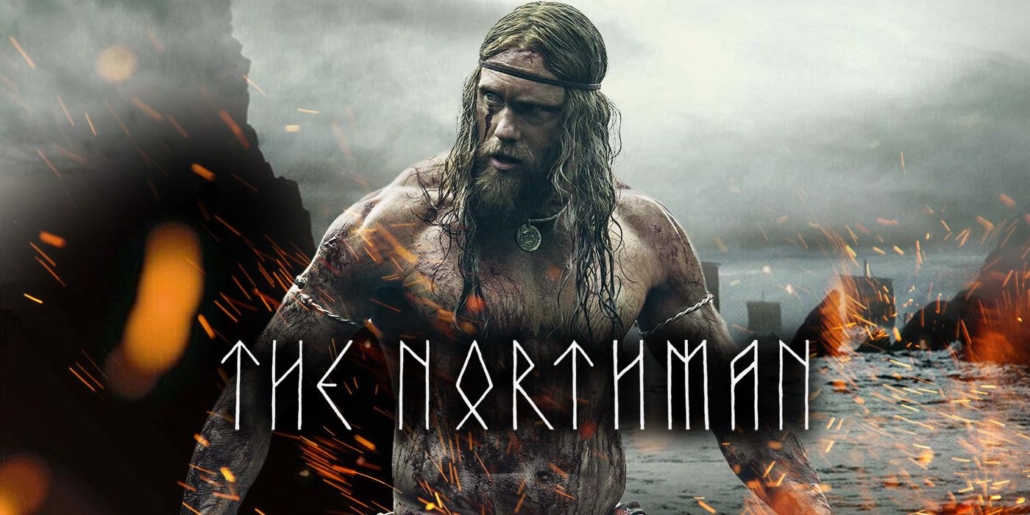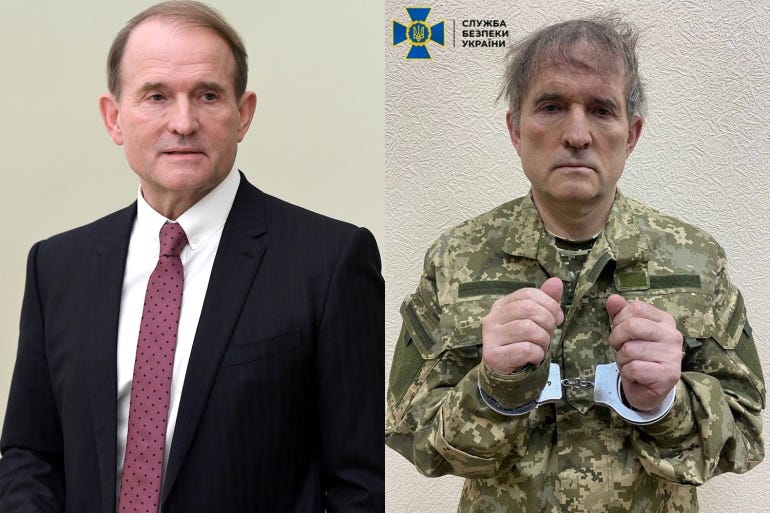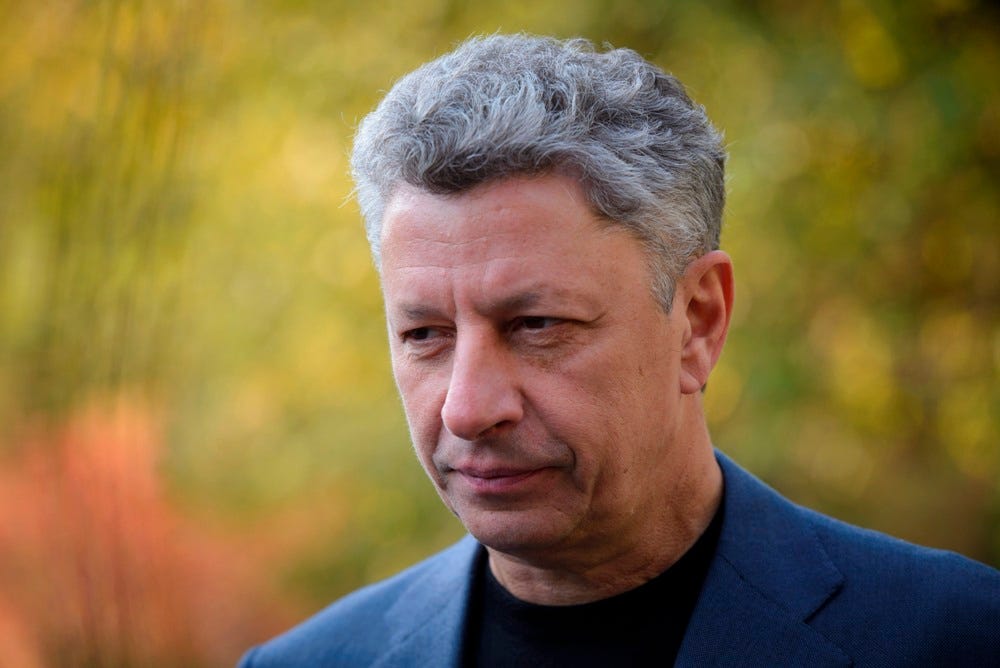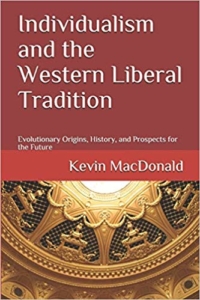The Generational Divide in Eastern Europe: The Soviet Boomers
In the West, we spend a lot of time endlessly debating the various generations and their voting patterns, values, and economic niche in our societies. While there are exceptions to any rule, certain generalizations have come into focus about the Silent Generation, the Baby Boomers, Generation X, Millennials and the Zoomers.
But what about in Eastern Europe? Do they have a similar generational divide?
Well, again, in the West, this generational divide was created mostly as a result of the cultural revolution of the 60s. Generations before then certainly differed in their views and their historical circumstances, but something changed from the 1960s onwards that divided the population into distinct cultural cohorts. The equivalent occurred in the East during the late 80s and the early 90s, following the collapse of the Soviet Union and the cultural revolution that occurred in its aftermath. Once again, everything in Slavland revolves around the USSR and people’s relationship to it, memory of it, and attitude towards what it represented.
The Soviet Generation is basically anyone who came of age in the Soviet Union and spent their formative years as a part of that system. These people generally have a nostalgia for the USSR that is tied both to their memories of their halcyon youth as well as a general support for the actual economic, social, and political system in which they lived. This is partially explained by the fact that the late Soviet Union was generally a stable, crime-free and an all-encompassing cradle-to-grave nanny-state. More than any other generation, the Soviet Generation is largely monolithic in its views and attitudes because their source of information was standardized and they did not have access to alternative media. This makes analyzing them quite easy, although it makes conversing with them rather tedious at times — you know what they’re going to say before they even formulate the thought in their heads.
It is worth mentioning that these people are often pejoratively referred to as the Sovok Generation, and when people in Eastern Europe refer to “sovoks” or the state of being “savok-like” they are referring to Soviet attitudes, values, and ways of doing things. It’s not a very nice word, but it’s also not quite at the level of being a curse or a slur. It is used in much the same way as the phrase “Ok, Boomer” is used by Millennials to deride their parents’ generation and their values.
A sovok, of course, is a broom in Russian and for some reason, it became popular to refer to Soviet nostalgists as sovoks, probably because of their tendency to deny that anything bad was happening during Soviet Union days. As an example, if someone were to bring up the existence of the archipelago of gulags in Siberia that the Soviet Union had created, the sovok would deny that such a thing existed and simultaneously insist that the people in them deserved to be incarcerated before just sweeping the discussion under the rug, as it were.
Anyway, because of their demographic weight, almost all culture in Eastern Europe revolves around them and their views on the world and their tastes. Because they remain committed and dedicated TV watchers, all official propaganda is broadcast with them in mind. As a result, you get non-stop state-funded dramas about World War II that play on repeat almost continually, with barely any commercial breaks. Spend some time living with these folks and you get used to the non-stop rat-at-tat of machine-gun fire wafting through the paper-thin commieblock walls and angry German barking noises coming from the TV. It is only interrupted occasionally by those god-awful “narodinye” music concerts that feature singers in their 60s singing love songs from better days and commercials advertising laxatives and the services of private health spas.
Hey, what can I say? The TV people clearly know their target demo.
Furthermore, there has yet to be an Obama-like politician (in Russia at least) who demonstrated the power of social media and internet outreach to younger folks to produce an electoral landslide in his favor, although Alexey Navalny came close. TV remains the powerhouse of political campaigning because it targets the largest, most consistant voting bloc in the country. As a result, all politicians promise to increase pensions, social benefits, and other socialist policies aimed at people in their 50s and above. Post-Soviet old-timers also have an economic interest in being pro-Communist/Socialist considering that they now collect checks from the government to fund their retirement — something that they were promised during the ancien régime and which they hold modern politicians accountable for delivering on.
In contrast, pro-Soviet sentiment is virtually non-existent in the post-Soviet generation that comprises the younger age demographic. They generally view the red flag with a sense of unease and associate it with stagnation, corruption and repression. The official state cult of World War II and the Soviet Union’s victory over Nazi Germany and her allies does not resonate with the youth, but, again, it resonates quite deeply with the Soviet Generation, who was raised on it. In the 70s and into the 80s, the Soviet government, which had been surprisingly quiet about World War II, started leaning into WWIIism once the Marxism and building a socialist utopia thing began to lose resonance with the public. As for why the Soviet state was loath to embrace WWIIism initially, it may have been because they had incorporated many of the countries that they had fought against into its empire. Unlike the Allies, the Soviets sometimes demonstrated a Realpolitik attitude towards reincorporating and reusing old cadres from the various vassal state that they had conquered which led to lower-level Nazi officials finding official employment in the newly-reformed Stasi, for example. It was all that or it was the embarrassment that the Soviet state felt at the scale of destruction that they had suffered. Or maybe the idea simply hadn’t crossed their minds yet or it was rejected by party elites for being too “militarist” or “imperialist” or “bourgeoise.”
Regardless, the two-headed Russian eagle has yet to move past World War II and her eye remains firmly fixed on the past, fighting the last century’s wars over and over again in her own mind. Russia cannot form a vision of the future because she has not yet reconciled with her past.
Since we’re on the topic of demographics and World War II, it’s worth pointing out that the war did indeed blow a giant hole in the Slav population. But, if reproductive rates had remained consistent in the years following the war, this wound could have healed over in short order and the body of the people could have recovered in a few generations time. Instead, because of the Soviet industrialization policy, the aquifer that produced fresh Slavic souls was deliberately destroyed with the destruction of Slavic villages where families traditionally had upwards of 8 children or more through collectivization policies implemented by the government. Peasants were herded into the cities to begin their new lives as proletarians and to repent of their wicked kulak ways. The housing crisis, plus the Soviet cultural reforms which encouraged feminism and women’s rights along with the suppression of religion all worked towards contributing to the demographic slump that occurred soon after. In this sense, the Soviet situation almost exactly mirrors what occurred in the West, and in the United States, in particular. A baby boom following the war, followed by a steep drop-off, which left a huge demographic cohort dwarfing the subsequent ones that followed. Just like in the US, the Soviet Boomers grew up in a time of relative peace and plenty. Jobs grew off of trees as the Soviet Union needed anyone that they could get their hands on to rapidly build new cities, new factories, new roads and new missiles. When this all came to an end following the collapse of the USSR, the Soviet generation was left shell-shocked and many lost all that they had worked for. Previous generations were largely self-reliant and relied on the social safety net provided by their large families and village communities. But the Soviet generation, whether they had a choice or not, actually believed the promise that the state made to take care of them. As a result, they were the first generation to abandon the concept of large, nuclear and extended families and embraced the nanny-state whole-heartedly. They have become a huge burden on the post-Soviet economy with their constant trips to state-subsidized clinics and demands for ever-increasing pensions paid for by a much smaller working-age demographic.
Most Soviet old-timers have also retained bits and pieces of old Soviet propaganda in their minds, although these have been warped by time and the revisionist efforts of Neo-Sovietist writers and propagandists. Nikolai Starikov stands out as a shining example of this new form of Soviet apologism and revisionism, although it has become a veritable cottage industry in the countries of the former Soviet Union.
As a result, Soviets have a rather eclectic list of likes and dislikes that don’t make any sense from a Western perspective. For example, they hate Solzhenitsyn, whom they view as a traitor and they love Stalin, whom they view as the savior of Russia. Oh and they also hate Lord of the Rings for its anti-industial themes and because they believe that Sauron and Mordor represent the USSR — which they might, actually, come to think of it. But the controversy around the Lord of the Rings and its publication in the USSR is a story for another time. Soviet Boomers generally vote either for the Communists or for Putin, depending on whether they’re feeling particularly peeved at the government during that election cycle or not. As a rule, they are very concerned with economics first and foremost, and in particular, economic self-sufficiency. At heart they are autarkists, and nurse a burning hope for the Soviet promise of one day overtaking the West in the production and efficient distribution of widgets.
In short, their worldview and preferred political platform, in a nutshell, is economic nationalism (although they abhor the use of that particular N-word), cradle-to-grave big government socialism, and worshipping at the altar of the secular state religion of WWIIism.
I would also be remiss if I didn’t point out that the Soviet generation has a bizarre view of history and largely views the twentieth century through a conspiratorial lens. Please strap in for this next part and try to follow along as best you can. Most Soviet old-timers believe all of the following points simultaneously, even the ones that contradict one another. And so, without further ado:
- Jews are not to be trusted. (Stalin condemned the Jews as being saboteurs of the Socialist project and the USSR subsequently supported the Arabs and their fight against Israel.)
- Jews are very clever and have a lot to teach Eastern Europeans
- Jews are responsible for the Russian Revolution and the carnage that followed.
- Lenin had some good ideas.
- Lenin was a secret Jew.
- Hitler was a secret Jew funded by the United States and Great Britain.
- Stalin was an enemy of the Jews and killed by the Jews.
- Anti-Semitism is wrong and the Soviet Union was not anti-Semitic.
- The Soviet Union saved the Jews from Hitler (and that’s a good thing).
- The Jews destroyed the Soviet Union.
- The Jews murdered the Tsar, but the Tsar was oppressing the people so he had to go.
- The gulags are a myth.
- The gulags were necessary to weed out traitors to the Soviet Union.
- “Your great-grandfather was sent to the Gulags”.
- Solzhenitsyn lied about the Gulags and was a traitor.
- Stalin was a Russian patriot.
- National-Socialism is abhorrent and evil.
- Social-Nationalism is what made the USSR great.
- The Soviet system was just and fair.
- The Soviet Union stole wealth from Russians and redistributed it to the other socialist republics.
- Ethnicity is not important, Socialism can establish world peace.
- The Turks are a race of criminals and scoundrels.
- Gorbachev was a traitor to the Soviet Union.
- Comrade Andropov was a swell guy.
- Krushchev was a drunk Ukrainian peasant.
- Zhukov should have succeeded Stalin.
- The KGB were just NKVD and Chekha thugs.
- “I had many friends in the KGB.”
And on it goes.
Overall, they’re a mixed bag, to put it lightly. On the one hand, there is nothing wrong with economic nationalism and one could even make the argument for implementing some elements of socialism to raise living standards as part of a populist political platform. On the other hand, these ideas are simply not enough to form a romantic and uplifting message that captivates the hearts of the younger generations and chart a new civilizational course for Eastern Europe. What’s worse, these relatively sound and grounded ideas are tarnished by their constant and deliberate association with the Soviet Union.

In much the same way that myopic nationalists in the West deliberately associate their good ideas with the toxic brand of the Third Reich, so too do the old-timers in the East poison the well by associating the re-opening of Russian factories and social conservatism with gulags and secret police dragging people out of their apartments in the middle of the night.
Furthermore, they, like their Baby Boomer counterparts in the West, consider themselves the pinnacle of human evolution, and generally have an attitude of knowing better and being better than any generation that came afterwards. Their children and grandchildren (if they have any) will point out that everything built by their generation is ugly, which the eternal Sovok will, of course deny in much the same way that Western Baby Boomers demonstrate a peculiar appreciation for the sprawling strips malls and vacant parking lots that they built in the West.
More than anything, the Soviet Generation is terrified of being called the N-word and go to great lengths to extol the virtues of “the friendship of nations” that they supposedly successfully built in the USSR. They will frequently point out that there was no ethnic conflict in the Soviet Union, because Soviet values had defeated ethnic chauvinism by giving humanity a common goal and mission: efficient widget production and generous pensions, basically. If you point out that the Soviet Union achieved and maintained this uneasy peace through its military might, well… be prepared to have the N-bomb hurled at you.


And then, of course, one can’t help but notice the rather schizophrenic messaging around the war in Ukraine. See, you have young Russian nationalists with Slavic rune patches…
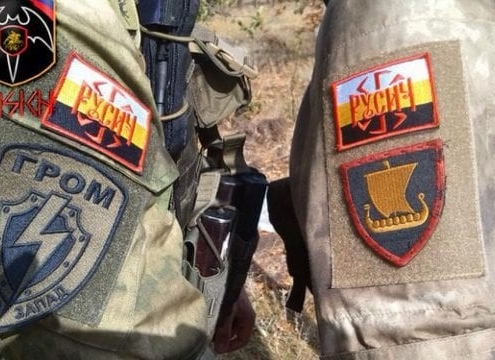
… or insignia derived from right-wing video games and fantasy novels ….
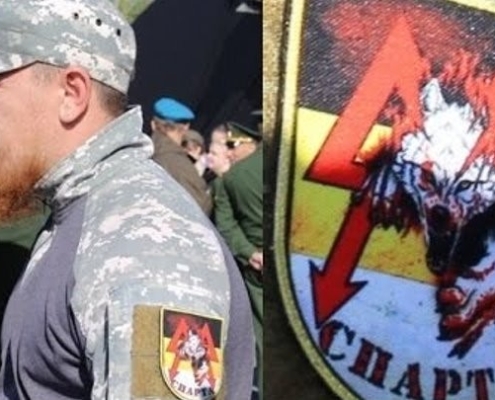

… shooting at Neo-Nazi mercenaries with SS Black Sun patches who are on the payroll of a Jewish oligarch.

And then you have Soviet pensioners coming out to welcome the militias of Luhansk and Donetsk People’s Republics by waving the red Soviet Flag. Lenin, of course, created the modern state of Ukraine to weaken Russia. Putin himself mentioned this fact in his speech declaring war on Kiev and called for the “de-communization” of Ukraine!
But they wave their red flag regardless. And then the mayor of Mariuple goes on to declare that a statue to the Soviet granny who came out of her home and waved a red flag at Ukrainian troops (viral video) will be built in the center of town!

This is Eastern European meta-political schizophrenia at its finest. I can only shrug and laugh at this point. Hopefully you find it as amusing as I do.
And of course, both sides also routinely accuse the other of being Nazis in their official propaganda. Sergei Lavrov just recently announced that, unbeknownst to everybody, Hitler was actually Jewish and that Jews are the real anti-Semites. He was then quickly condemned by Jews, who as a community, accuse Putin and his government of being Fascists and prefer to support the Jewish president of Ukraine. Lavrov’s statements are sure to raise eyebrows in the West, especially among members of the Dissident Right. But, if you had understood that Lavrov and most of the people in the Kremlin and the bureaucracy are Soviet Boomers, you could have basically set a timer and put your feet up while waiting for him to drop the obligatory “Hitler was a secret Jew anti-Semite” line. All I can say is that a lot of things become clearer about modern Russia when you understand the Sovok Mindset™.
Anyways I could write volumes upon volumes about the Sovoks and their Lies, but I feel that at this point I should tone down the criticism a bit and point out that compared to the generations that followed, these guys are the only ones holding the line against the onslaught of Western neoliberal values that the youth are so eager to gobble up and copy. Fundamentally, we have to conclude that they are simply a product of the informational environment that they grew up in. They cannot hate the Soviet Union because they grew up in it and to reject it is to reject decades of conditioning and hard work dedicated towards realizing the promised Socialist utopia. It’s easy to make fun of them and their beliefs, but they did not have the internet growing up, and they had to reconcile the whispered warnings of their far wiser parents’ generation and the realities of having to adjust and make a living in the Soviet system. They saw themselves as the Generation That Was Promised — as modernizers that would usher in an era of peace and plenty. When this vision crashed and burned, they reached out and clung to whatever they could to give them some sense of grounding and purpose. They did their best to rationalize irreconcilable realities and historical meta-narratives and as a result, their worldview is schizophrenic, to say the least.
What’s more, they seem incapable of realizing that their worldview is not universal and simply not shared by subsequent generations or those who lived outside the territories of the USSR. New ideas and geopolitical realities bounce off of them as their worldview has already firmly cemented and is continually reinforced by state propaganda geared at keeping them happy, leaving little room for doubt or deeper thinking to change their accepted vision of reality. Their vision of the future is myopic, as it is simply based on a nostalgia for the past.
In conclusion, in much the same way as the fate of the West is largely in the hands of the post-war generation, who still retains some semblance of wealth and electoral power, so too is the current political situation in Russia largely dominated by the needs, concerns and worldview of the Soviet Boomers. Funny enough, both of these demographic groups in the East and the West have more in common with one another then they care to admit.
God help us all.

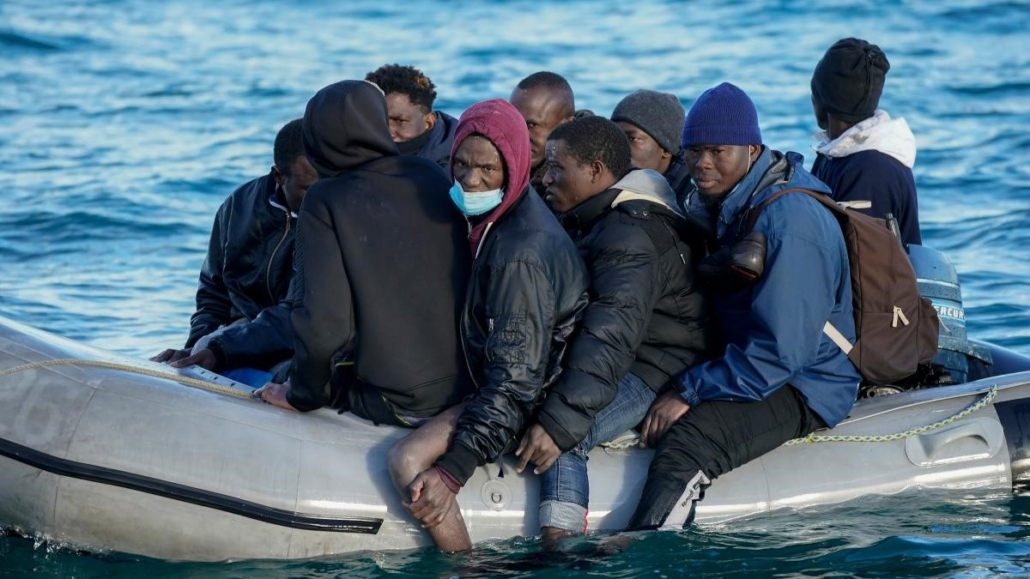

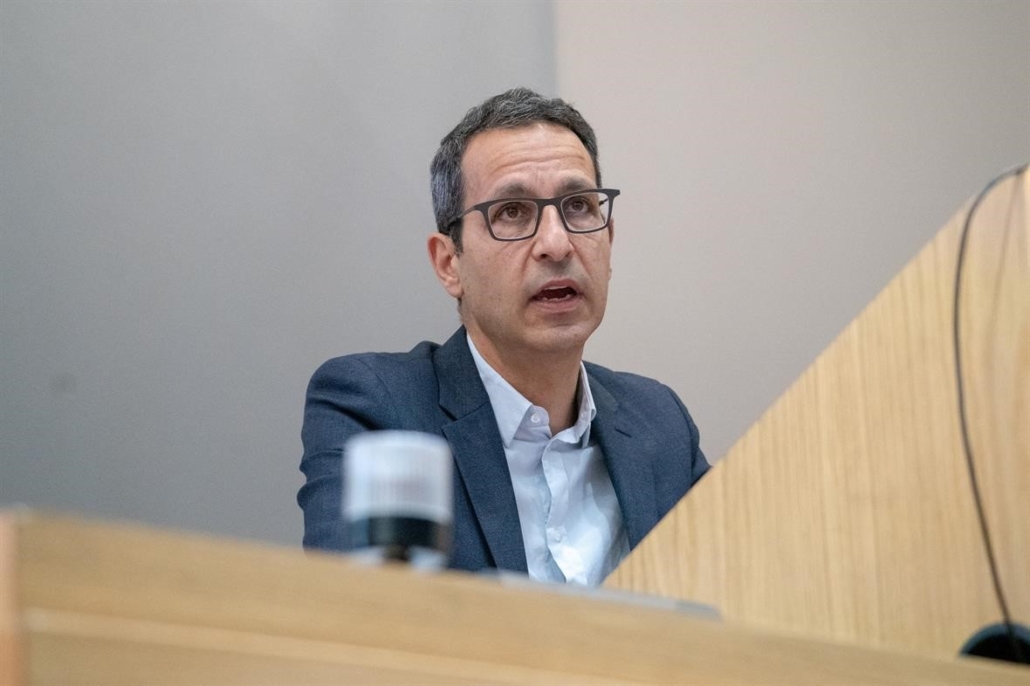 Enver Solomon
Enver Solomon
